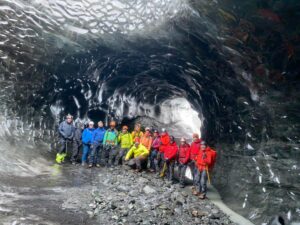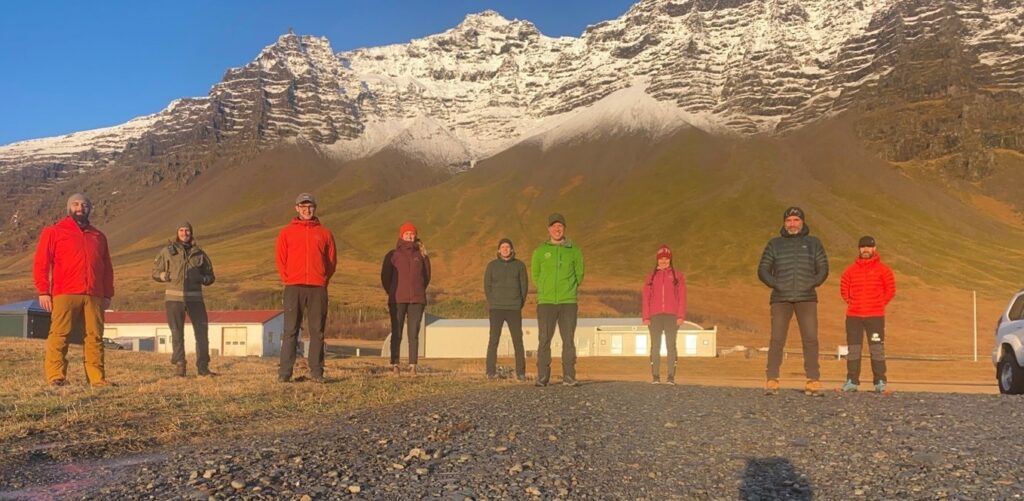by Jón Gauti
In April of last year, two experienced mountain guides from Canada came to Iceland to conduct the final exams for Ski Guide 3. It is worth mentioning that all participants met their five requirements and can all call themselves Ski Guides, according to the laws of the Association of Icelandic Mountain Guides (AIMG). With this, the five individuals became the first ski guides to receive formal education in Iceland, even though the requirements are comparable to those east and west of the Atlantic.
Those who passed the ski guide certification in spring were Inga Dagmar Karlsdóttir, Jón Gauti Jónsson, Leifur Örn Svavarsson, Ólafur Þór Júlíusson, and Smári Stefánsson.
It is also worth noting that with this achievement, Leifur Örn Svavarsson and Jón Gauti Jónsson are the first Icelanders to complete the entire training program in the country and can now call themselves AIMG Mountain Guides.
It is also worth mentioning that three Icelanders have already passed internationally recognized mountain guide exams, and more are on their way through cooperation with the mountain guide association in Sweden, which is a part of the international mountain guide community UIAGM.
It is not far-fetched to claim that the beginning of mountain guiding in Iceland can be attributed to increased interest from foreign travelers seeking information about the interior of Iceland during the late 18th century. Back then, it was not uncommon for knowledgable and agile farmers to follow the instructions of kings, scientists, or other curious explorers to the mountains and glaciers of the country.
Therefore, it can be said that mountain guiding in Iceland got off to a good start but has remained largely unchanged since. The golden age of alpine climbing in Europe is said to have been in the mid-19th century when knowledgable mountain guides began to actively follow interested parties in ascending the high peaks of the Alps and later around the world.
Today, mountain guiding is a protected professional title almost everywhere, (yet it has humble beginnings. Even today, many guides who enter the professional field have begun their journey with self directed learning often starting with their peer groups or fellow guides. As guiding educational structures are strengthened and standards reinforced, we look forward to a future where guiding associations pave the way to build strong foundations in the industry.
As many and although that is the case, many guides had to begin their careers relying on their communities and fellow guides alike to progress their skillset often absent of any formal education. With increased education for guides and clear requirements, it is hoped that this will change in the near future as many guiding associations pave the way to build strong foundations in the industry.
The Association of Icelandic Mountain Guides was founded in December 2012.
The main objective of the association has always been to increase professionalism in mountain guiding.
The achieve its goals, the association has offered comprehensive courses and exams with requirements similar to those for mountain guides in other countries.
But what is mountain guiding, and what does it entail in Iceland?
In general, mountain guiding involves leading people safely in the rugged landscapes of wilderness, mountains, and glaciers.
The emphasis on mountain guiding can vary from country to country based on local conditions. In Iceland, glacier guiding is central to the profession, but general mountain guiding has also increased in popularity year by year, with ski guiding gaining recognition as a legitimate field of expertise within the Association of Icelandic Mountain Guides (AIMG).
Initially, there was a significant demant for glacier guiding, but soon, mountain guiding gained ground, and the first years of the association were spent organizing such courses and exams. In 2016, the first exam for ski guiding was held, as mentioned above.












